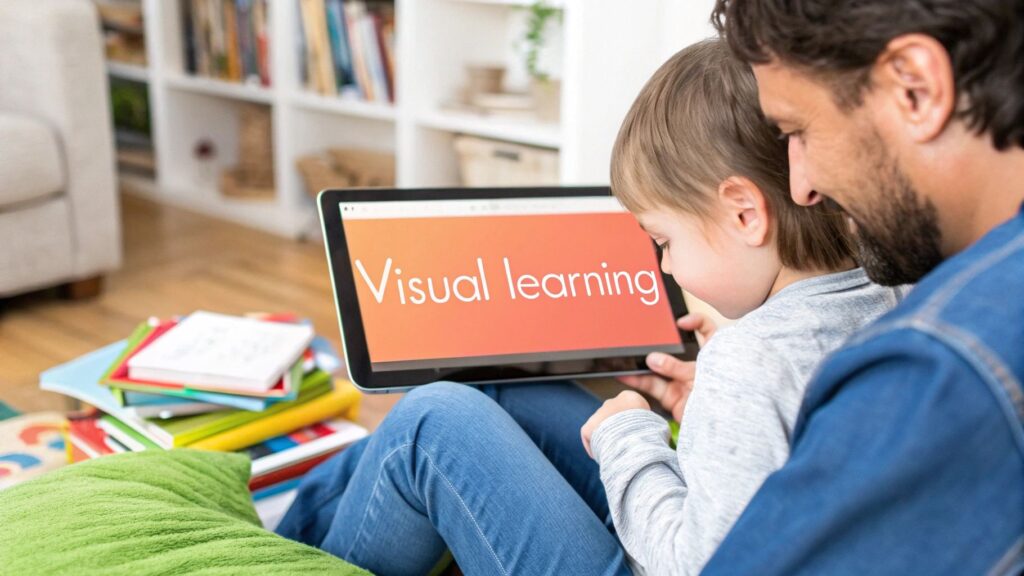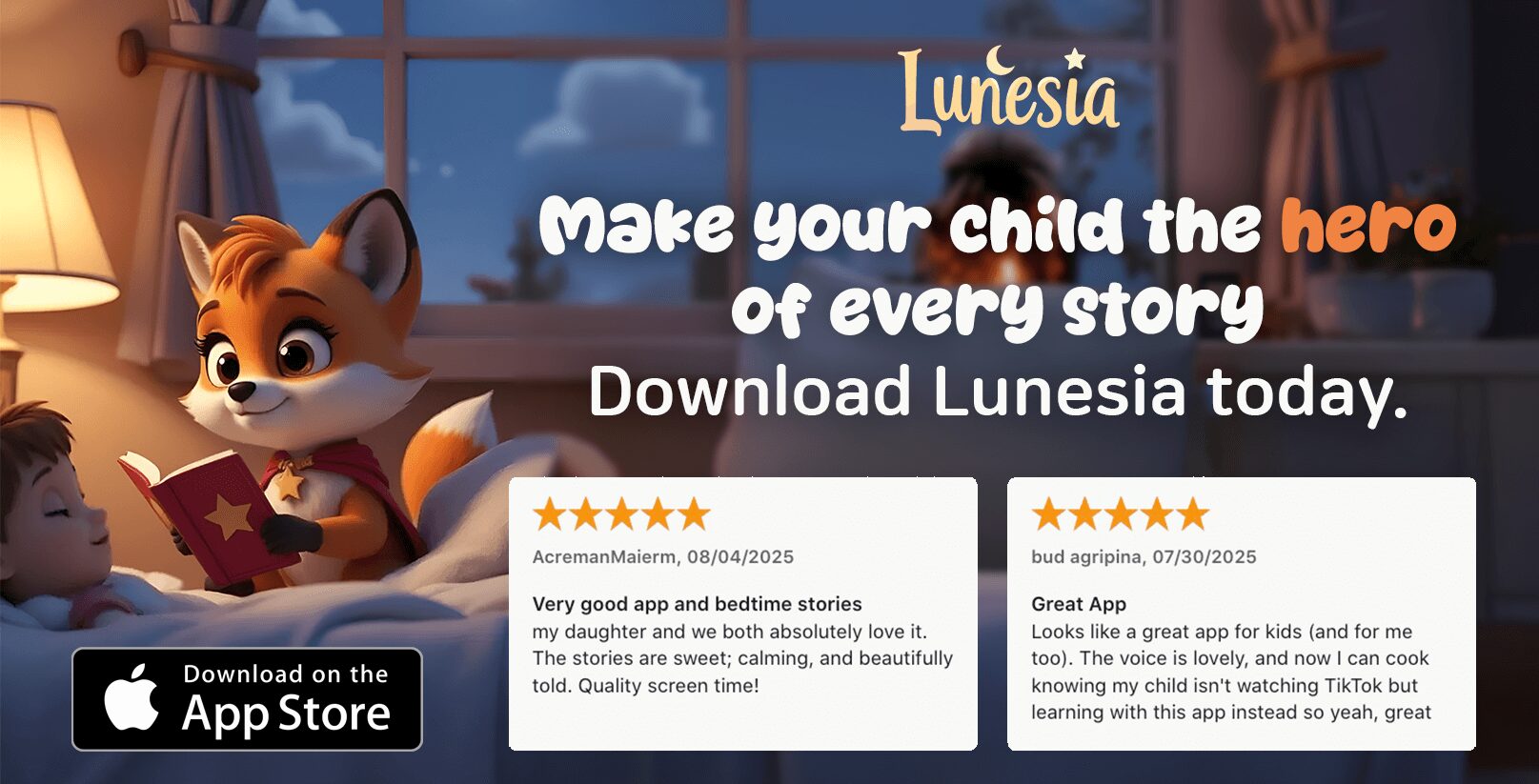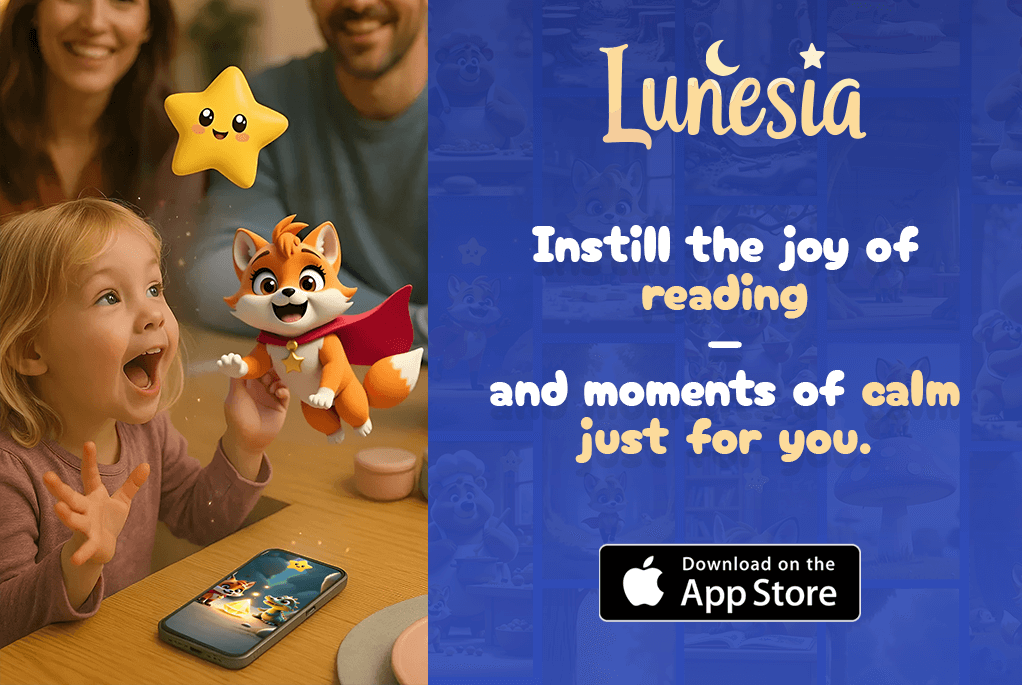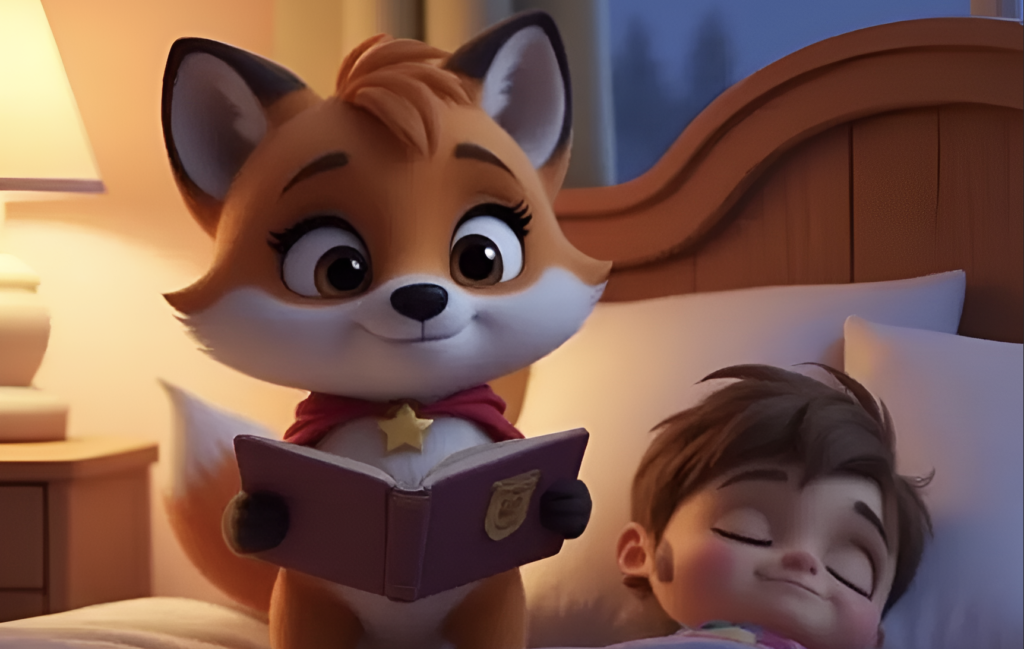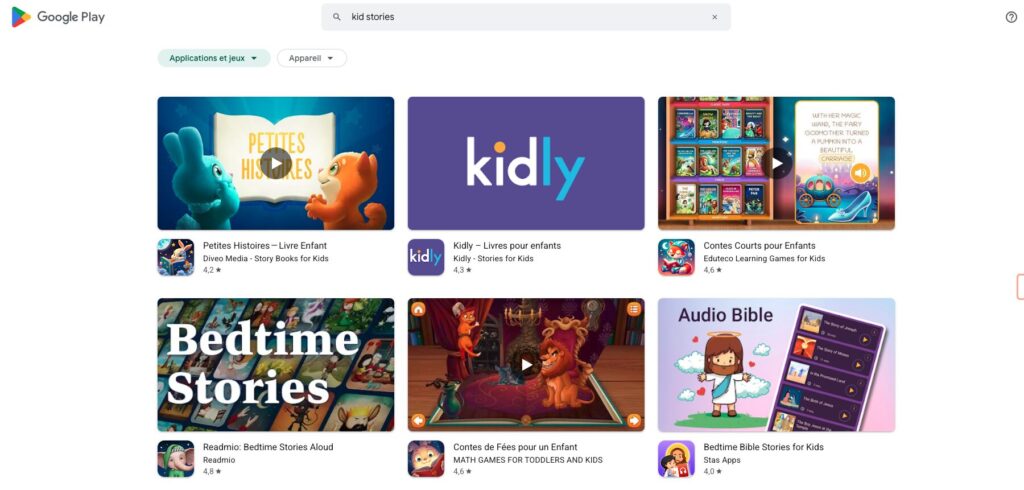Have you ever noticed how your child can instantly spot their favorite toy in a messy room, but their eyes glaze over when you’re explaining something with just words? That’s not a cute quirk you can just brush off. It’s a powerful clue into how their brain is wired, and understanding it is your secret weapon to easier parenting. This is visual learning in action—the natural language they were born speaking.
The Secret Language Your Child Already Speaks
Ever wonder why a colorful picture book holds your little one's attention so much better than a long explanation? Or how they remember exactly where you hid the cookie jar? That’s their brain’s native language at work, and once you learn to speak it, everything from getting ready in the morning to handling a tantrum becomes simpler.
Forget the dry, academic definitions for a moment. At its heart, visual learning is simply your child’s built-in blueprint for making sense of their exciting, vibrant world. It’s how they connect the dots, understand big feelings, and explore everything around them.
This natural ability lines up perfectly with the principles of social learning theory, which shows just how much kids learn by watching and copying what they see. It’s not just a learning “preference”—for most of us, it’s the main highway for information.
Did you know that a staggering 65% to 80% of people are visual learners? This means the majority of us, including our little ones, absorb and remember things far better through images, diagrams, and animations than through words alone.
This infographic breaks down just a few of the ways visual learning works.
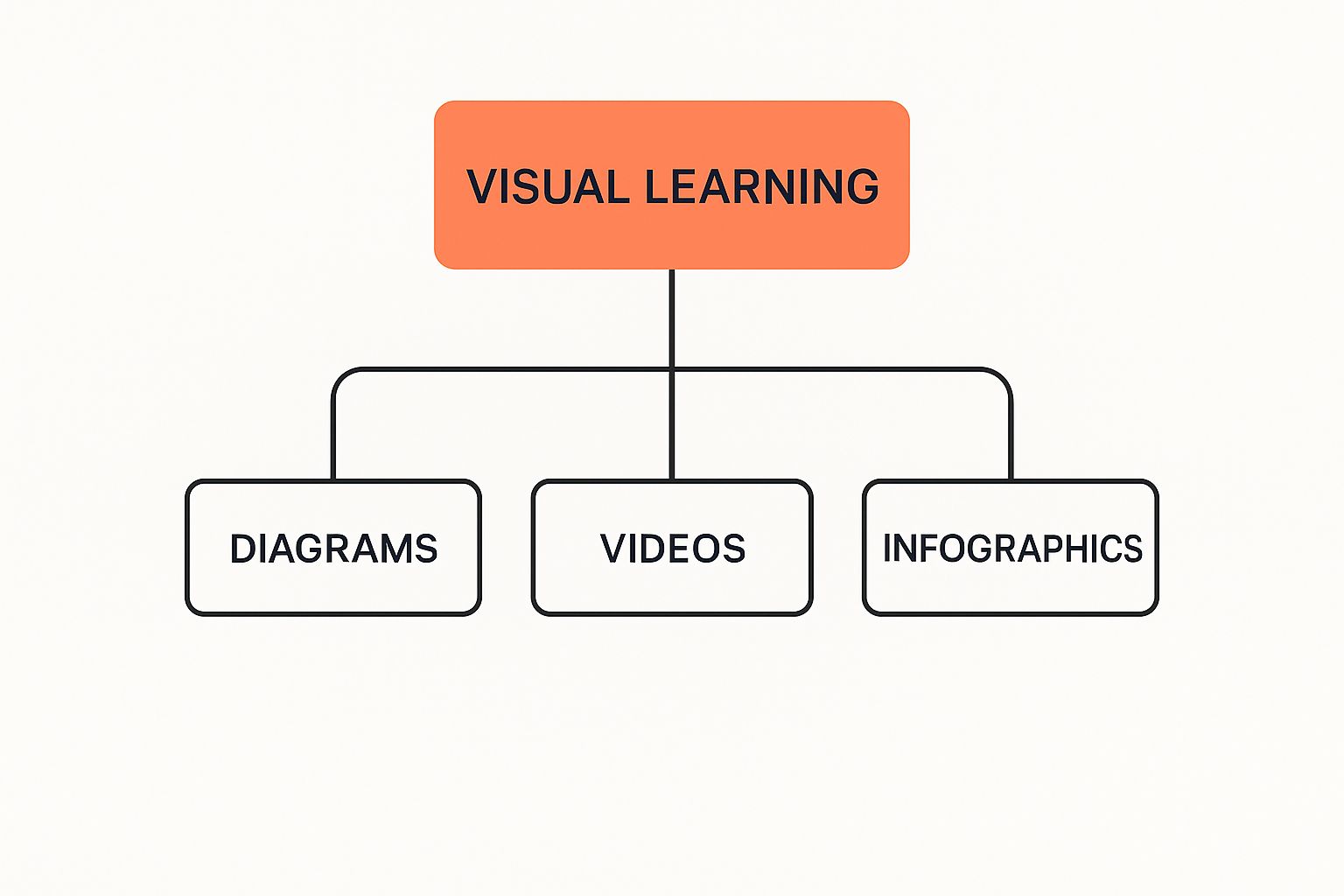
You can see how different ideas branch out from a central concept, making it all much easier to grasp at a glance. Once you get the hang of this, you can start using these same visual tricks in your everyday life, turning complicated ideas into simple, see-able moments for your child.
A Parent's Guide to Visual Learning
To make it even clearer, here’s a quick look at how these big ideas show up in your child's day-to-day actions. Think of it as a cheat sheet for spotting their visual learning superpowers.
| Core Concept | Everyday Action |
|---|---|
| Connecting Ideas | Pointing to a picture of a dog in a book and then pointing to your family dog. |
| Remembering Patterns | Knowing exactly which puzzle piece fits where after only trying it a few times. |
| Understanding Emotion | Seeing a sad face in a cartoon and saying, “He’s sad,” or offering a hug. |
| Following Directions | Watching you build a block tower and then trying to copy the same steps. |
Recognizing these small moments helps you see just how powerful visual learning is. It’s not about flashcards or formal lessons; it’s about meeting your child in the world they already understand so well—a world of color, shapes, and pictures.
Why Pictures Are Your Parenting Superpower
So, what’s the big deal with pictures? Why are they so incredibly important for your little one?
Think of it this way: your child’s brain is like a patch of rich, fertile soil. When you just use words, it’s like scattering seeds on top of the ground—some might take, but many will just blow away. Visuals, on the other hand, are like gently planting those seeds, giving them a chance to take root and grow strong. This isn't just a cute metaphor; it's genuinely how their developing minds are wired.
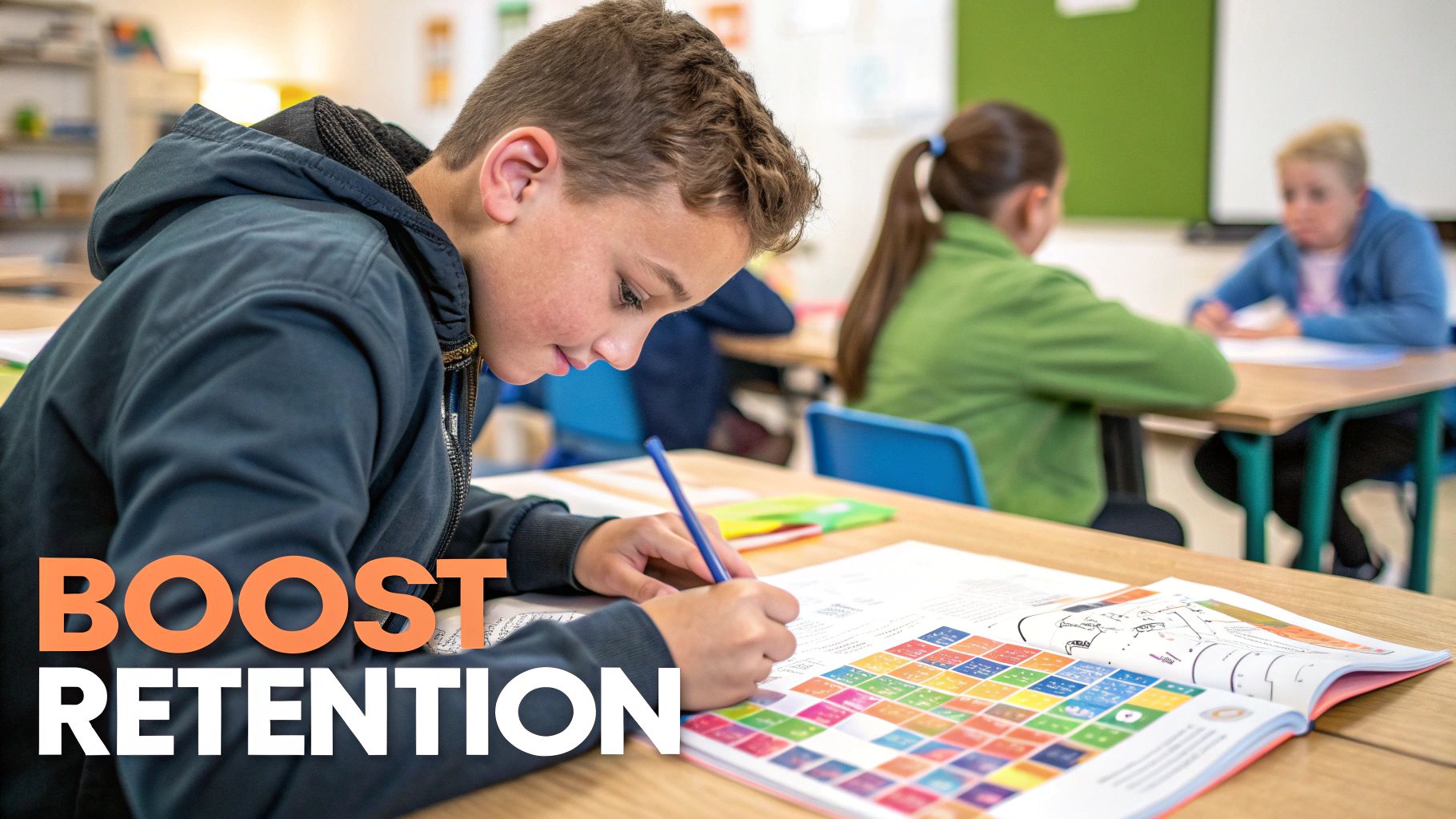
Here's a mind-blowing fact: when your child sees a picture, their brain processes it 60,000 times faster than plain text. It’s the reason a simple sticker chart with smiley faces actually gets them to brush their teeth, while your five-minute speech about dental hygiene falls on deaf ears. Visuals make abstract ideas feel real—something they can almost reach out and touch.
Ever tried to explain a big concept like sharing? A lecture on kindness might go in one ear and right out the other. But what happens when they see it happen in a story?
Making Big Feelings Concrete
An interactive story, like the ones inside Lunesia, can show a character looking sad after their toy was taken. Your child sees the slumped shoulders and the teary eyes. All of a sudden, "empathy" isn't just a word you say. It’s a feeling they can recognize and begin to understand. The visuals in our beautifully illustrated books make these complicated emotions tangible, helping kids connect the dots between actions and feelings.
And this method isn't just a little more effective; it's a powerhouse. Research has shown that using visuals can boost learning outcomes by up to 400%. That’s because our brains are built for images, with some studies suggesting we hold onto 65% of information when it's presented visually.
By turning feelings and rules into pictures, you’re not just managing a tantrum or a squabble over a toy. You’re building a foundational library of emotional intelligence your child will use for the rest of their life.
This is exactly where Lunesia comes in. Our interactive adventures don’t just tell stories; they show them. When your child makes a choice—like sharing a magical berry with a lonely fox—they get to see the positive result play out right on the screen. They watch the fox’s sad face transform into a happy one.
This isn’t a lecture on being nice. It’s a safe, engaging playground where they can practice kindness, courage, and problem-solving, all while you get a much-needed, guilt-free break.
Turning Daily Routines Into Visual Adventures
Ready to put all this into practice? The best part is you don’t need any special tools or fancy flashcards. You can start turning everyday moments into powerful visual learning opportunities right now, using things you already have at home.
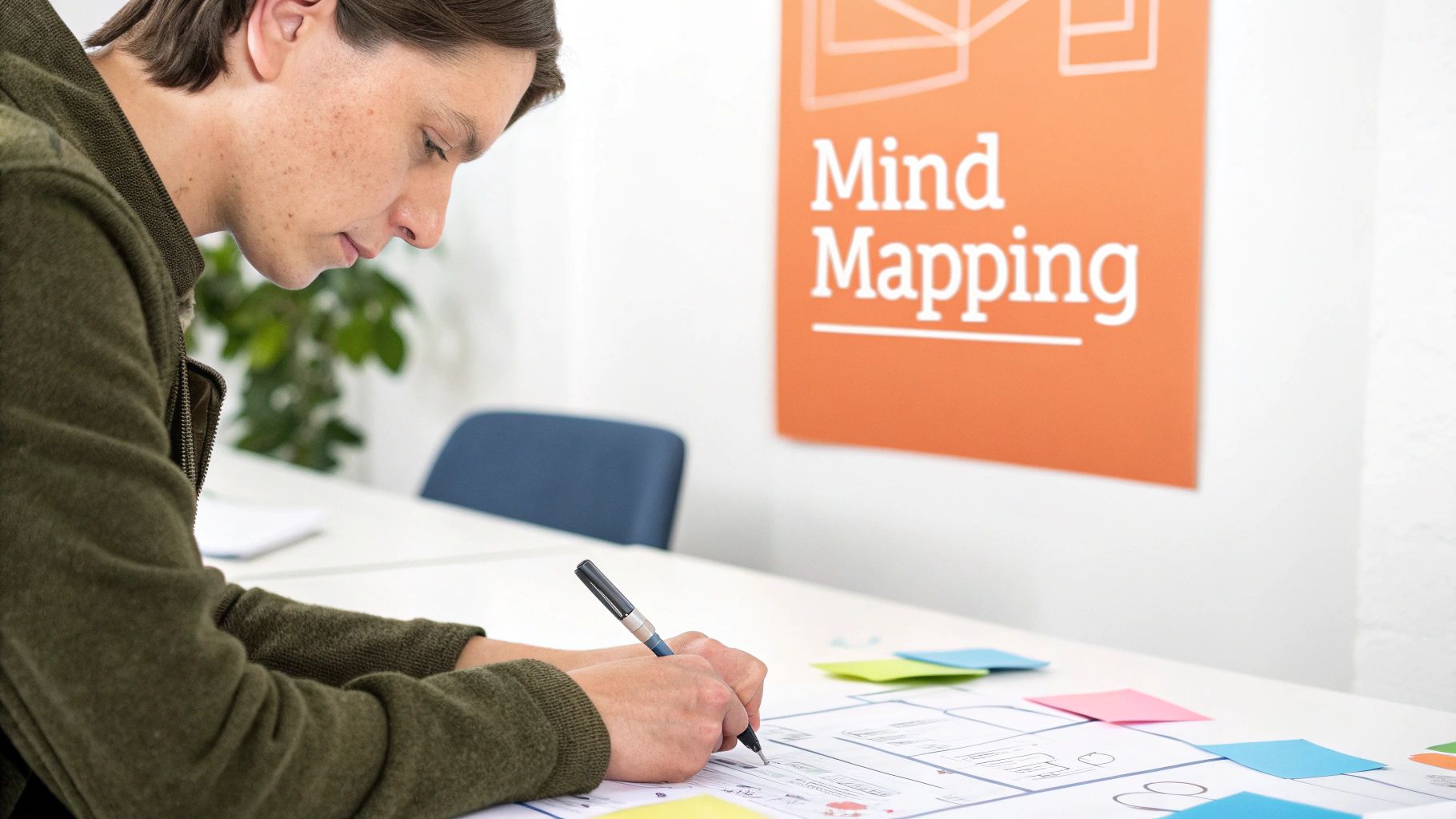
Just think about the morning rush. Instead of saying, “Brush your teeth, get dressed, put on your shoes” for the tenth time, what if a simple chart could do the talking? A picture of a toothbrush, followed by a shirt, then a pair of shoes, gives your little one a sense of control.
They aren't just following orders anymore; they’re completing a visual mission. It’s empowering.
From Tantrums to Teachable Moments
This visual approach is also your secret weapon for navigating those big, overwhelming emotions. When a tantrum hits, words often just add fuel to the fire. Instead, try drawing a few simple “feeling faces” on a piece of paper—happy, sad, and angry.
Ask your child to point to the face that shows how they feel. This simple action does three incredible things:
- It validates their feelings without any judgment.
- It gives them a non-verbal way to communicate a massive emotion.
- It shifts their focus, helping them move from reacting to reflecting.
Suddenly, a moment of pure frustration becomes a valuable lesson in emotional literacy. You're not just stopping a tantrum; you're building the foundation for resilience.
By turning abstract concepts like "getting ready" or "feeling angry" into something your child can see and point to, you’re speaking their native language. It makes parenting feel more intuitive and a lot less like a constant negotiation.
This same principle applies to playtime, too. Using colorful blocks to count isn’t just about memorizing numbers; it’s about seeing quantity in a tangible way.
Similarly, when you’re looking to incorporate educational apps into their daily routine, platforms like Lunesia use this exact strategy. Instead of just telling a child what kindness looks like, Lunesia lets them see it in action as they make choices that help characters in the story. They aren’t just listening; they are visually connecting their decisions to positive outcomes, building empathy and problem-solving skills one adventure at a time.
How Interactive Stories Build a Resilient Mind
What if screen time could actually build your child's character instead of just passing the time? This is where the magic of interactive storytelling comes in, turning passive viewing into active problem-solving. It’s one of the most powerful ways to use the principles of visual learning to your advantage.
Imagine your child isn’t just watching a cartoon; they’re the hero of their own adventure. That’s exactly what happens inside an app like Lunesia. When a character in a story faces a tough spot—like being afraid of the dark or feeling left out—your child gets to step in and make a choice.
They don’t just hear about courage; they get to see it in action. This visual cause-and-effect gameplay is a game-changer. It creates a safe space for them to explore how different decisions lead to different outcomes, building essential life skills along the way.
This isn't about memorizing rules. It's about building a visual library of emotional experiences, helping your child connect their actions to feelings like empathy, kindness, and resilience in a way that truly sticks.
From Screen Time to Skill-Building
A real-life tantrum over sharing a toy can be a massive headache. But what if your child has already practiced sharing in a story? When they choose to help a character in Lunesia, they see the positive result immediately—the other character smiles, the adventure continues, and everyone is happier.
This visual feedback loop is so much more effective than a lecture ever could be. It’s not just a story; it’s a rehearsal for real life. While your child is joyfully immersed in a beautifully animated, ad-free world, they are quietly learning to navigate big feelings and tough situations. You can explore more about how interactive stories for learning support this kind of growth.
These skills—kindness, problem-solving, and managing fear—are the absolute building blocks of a resilient mind. And the best part? While your little one is on a meaningful quest, you get a precious, guilt-free moment for yourself, knowing their screen time is genuinely helping them grow.
Claiming Your Guilt-Free Parenting Break
Let's be real for a minute. You adore being a parent, but some days you just need twenty minutes to yourself. Maybe it’s to finally drink your coffee while it’s hot, fire off one important email, or just sit in blessed silence. But then the guilt starts to bubble up, right? The screen time guilt.
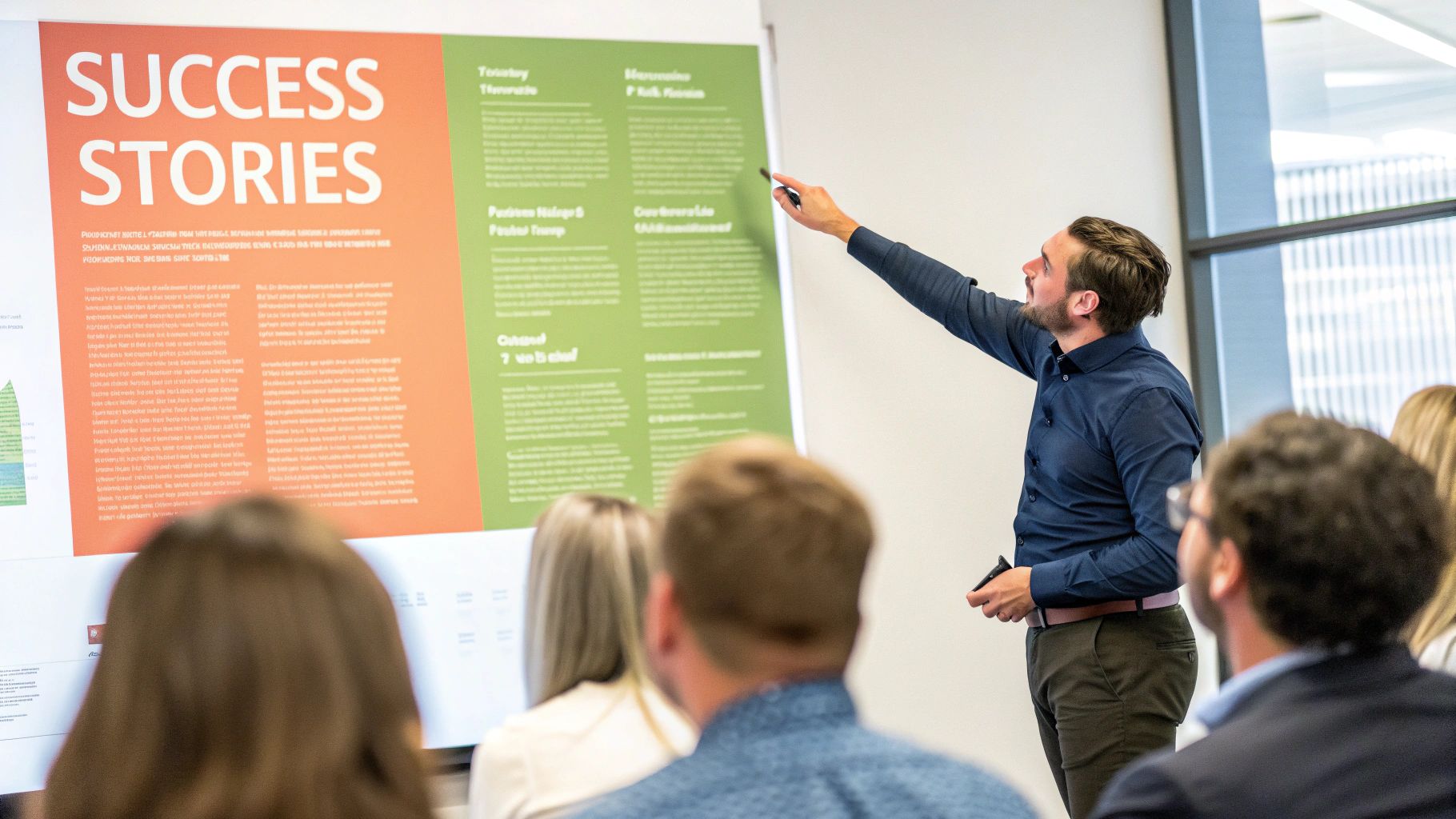
What if you could completely reframe that break? What if that screen time wasn't just a distraction, but a powerful moment for your child’s emotional development? This is the whole idea behind a platform like Lunesia.
It’s built to feel more like a parenting partner than just another app. While your child is happily lost in a beautifully animated, 100% ad-free story, they aren't just zoning out. They’re actively making choices, figuring out gentle problems, and learning about big feelings in a safe, guided space.
More Than Just a Distraction
This isn’t about just keeping them occupied; it’s about sending them on a productive, developmental adventure. Every single story is a playground for their growing mind, helping them practice:
- Empathy, by seeing how their choices impact the story's characters.
- Courage, by tackling small challenges in a whimsical, fictional world.
- Problem-solving, by helping a story’s hero figure out their next move.
And while they’re busy building these crucial life skills, you get something just as important: a moment of peace. You can recharge, knowing your child isn't just safe—they’re doing something genuinely good for them.
This is the ultimate win-win. Your child is immersed in a meaningful activity that builds their emotional intelligence, and you get precious time for yourself without an ounce of guilt.
So go on, take that break. With the right tools, screen time stops being a source of worry and becomes a source of wonder, growth, and some much-needed rest for both of you.
Got Questions About Visual Learning? Let's Talk.
It’s totally normal to have a few questions as you dive into this colorful world. Visual learning sounds great in theory, but what does it actually look like day-to-day? Let's sit down and chat through some of the most common things parents wonder about, so you can feel confident and ready.
Is This Just Another Term for "Screen Time"?
This is a big one, and I get it completely. The short answer is no, not at all. While some visual learning can happen on a screen, the two ideas are worlds apart. "Screen time" often means passive watching—like zoning out to a cartoon. Visual learning, on the other hand, is an active process of making sense of the world through what we see.
Think about it this way: a hand-drawn routine chart stuck to your fridge is a powerful visual learning tool. So is sorting laundry by color or building a block tower. The real difference is engagement. A thoughtful app like Lunesia is designed to turn screen time into active visual learning. It asks your child to make choices and see the results, transforming a passive experience into a productive, empowering adventure.
How Do I Know If My Child Is a Visual Learner?
Chances are, they are! Most kids (and adults, for that matter) rely heavily on what they see to learn, especially between the ages of 2 and 7. You’re probably already seeing the signs.
Here are a few telltale clues you can spot:
- They live for picture books: Your child might spend more time soaking in the illustrations than listening to the words you read.
- They’re puzzle masters: They have a knack for seeing how different shapes and patterns click together.
- They watch you like a hawk: They learn how to brush their teeth or tie their shoes by copying your movements, not by following your spoken directions.
- They remember places perfectly: They can point out exactly where that one special toy is hidden or navigate the way to the park with surprising accuracy.
Recognizing these traits isn't about slapping a label on your child. It's about appreciating their natural strengths and learning to speak their language.
What If I’m Not Artistic or Creative?
Let me put your mind at ease: you absolutely do not need to be an artist to support your child’s visual learning journey. This isn't about creating masterpieces. It's about using simple, clear visuals to communicate.
Stick figures, basic shapes, and bright colors are more than enough. A wiggly line for a mouth on a smiley face perfectly communicates “happy” to a three-year-old.
The goal isn't perfection; it's connection. You're using pictures to bridge the gap between your words and their understanding, making big routines and ideas feel way less overwhelming.
The global shift toward online education shows just how powerful this is. From 2020 to 2021, online learner enrollment worldwide more than doubled to 189 million, with platforms leaning heavily on videos and graphics to make learning stick. Your simple drawings are doing the exact same thing—making information accessible. You can read more about the global rise of visual-based learning and see how this method works from preschool all the way to adulthood.
And honestly, apps like Lunesia do the creative heavy lifting for you. They offer beautifully crafted visual worlds where your child can explore complex ideas like sharing and courage, all without you needing to pick up a single crayon.
Ready to get started? We've put together a few simple, age-appropriate ideas to support your child's visual learning journey, from their toddler days to their first years in school.
Visual Learning Tools by Age
| Age Group | Recommended Visual Tools and Activities |
|---|---|
| Toddlers (1-3 years) | – Chunky puzzles with simple shapes – Picture flashcards for animals and objects – Sorting toys by color or size – Looking at photo albums of family members |
| Preschoolers (3-5 years) | – Drawing with crayons, markers, and finger paints – Building with LEGOs or magnetic tiles – Creating simple routine charts with pictures – Interactive story apps with choice-based paths |
| Early School Years (5-7 years) | – Using whiteboards for drawing out ideas – Creating simple maps of your home or neighborhood – Playing memory games with picture cards – Following visual instructions for simple crafts |
These aren't complicated setups; they're just fun, visual ways to help your child connect with the world around them and build a strong foundation for learning.
Ready to turn screen time into meaningful, guilt-free growth time? With Lunesia, you can give your child the gift of interactive stories that build resilience, kindness, and courage, one choice at a time. While they’re joyfully navigating their own adventure, you get a well-deserved break.
